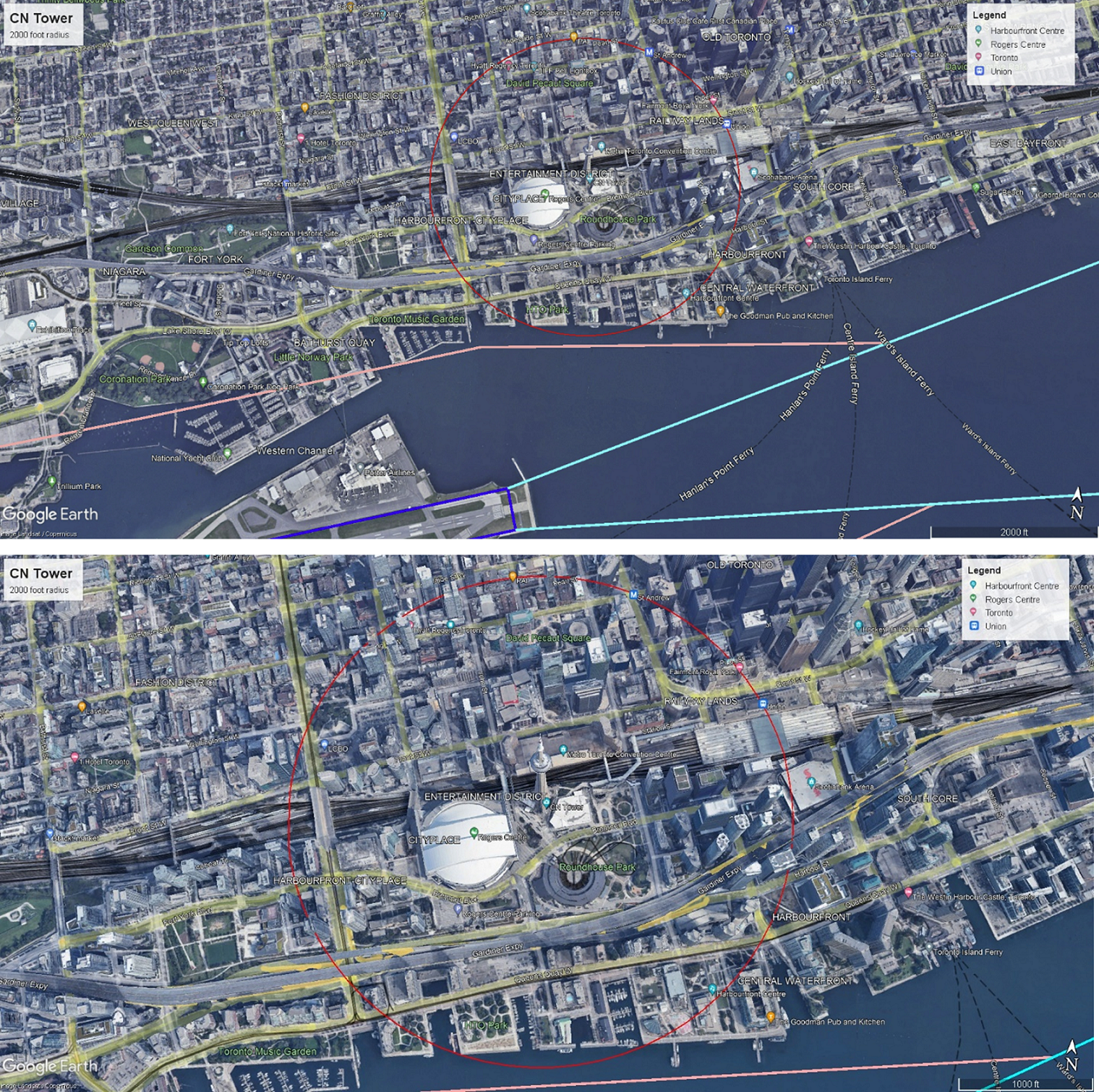by Paul Spiers, Civil Aviation Safety Inspector, Flight Operations, Transport Canada
It’s going to be a beautiful day to take in the scenery along the shoreline of Lake Ontario in Toronto. You and your passengers are looking forward to an exciting flight to view the sights. You check the weather to make sure you have good visibility, and you want to make sure there is little or no turbulence for your passengers. You have checked all the NOTAMs for the flight and you have filed a flight plan/itinerary.
Once you have reached the checkpoint, you initiate contact with Toronto City Centre Billy Bishop Centre Island air traffic control (ATC) to get permission to enter the zone and request a tour of the CN Tower. You are given instructions to maintain 2,000 ft above sea level (ASL) and remain north of the shoreline and south of the CN Tower. You acknowledge this instruction and head to the tower. The question now is, are you legal at the height you have been given to maintain, and exactly what does the controller mean by “north of the shoreline”? Does the controller mean stay north of the island shoreline or the shoreline on the Toronto waterfront? This thought passes through your mind but is quickly dismissed as your passengers talk excitedly and take pictures of the CN Tower. You are also caught up in the moment and try to give your passengers a good view of the CN Tower by positioning the aircraft as close as possible. All of this is photographed, videotaped, and put out on social media.
There is a good reason for maintaining vertical separation above ground and over obstacles. Although engine failures are rare, they still occur. You need altitude on your side for this reason. If you are over a densely populated urban environment like the City of Toronto, your options for landing with an engine out are few and far between. As for the horizontal separation, this is also for safety—the safety of the non-flying public.
What are the requirements to maintain a safe and legal distance vertically above the highest obstacles and what is the minimum horizontal distance from those obstacles? Some pilots may have not read the Canadian Aviation Regulations (CARs) in a long time or before setting out on the planned flight, or they have forgotten them entirely. In any case, this is not a good situation; you are not only potentially violating the regulations, but you are also reducing any safety margins those regulations afforded you and your passengers.
The regulation in question is CAR 602.14 (2) (a), which states:
- (a) over a built-up area or over an open-air assembly of persons unless the aircraft is operated at an altitude from which, in the event of an emergency necessitating an immediate landing, it would be possible to land the aircraft without creating a hazard to persons or property on the surface, and, in any case, at an altitude that is not lower than
- (i) for aeroplanes, 1,000 ft above the highest obstacle located within a horizontal distance of 2,000 ft from the aeroplane,
- (ii) for balloons, 500 ft above the highest obstacle located within a horizontal distance of 500 ft from the balloon, or
- (iii) for an aircraft other than an aeroplane or a balloon, 1,000 ft above the highest obstacle located within a horizontal distance of 500 ft from the aircraft
The scenario I have given in the beginning of this article is a real-life occurrence. The pilot of this aircraft did not maintain the legal minimum distance horizontally from the CN Tower. Other instances of this same scenario have been observed by members of the public in the CN Tower. Ignorance of the CARs is not a defense. You can be fined and/or your license can be suspended. The designated provision 103.08 (1) (2) Schedule II is a fine up to $3,000 for an individual, or up to $15,000 for a corporation under CAR 602.14.
The pilot could have used Google Earth (or a VFR Navigation Chart [VNC] or VFR Terminal Area [VTA] chart) and drawn a 2,000 ft radius circle around the tower and checked the elevation of the surrounding buildings and terrain to determine the minimum safe altitude to fly at above all obstacles* around the CN Tower. After contacting the controller with the requested sightseeing tour, ensure that you understand the clearance and instructions given and ensure they do not conflict with the regulations and your plan. Sometimes it’s helpful to read back the clearance or instructions to ensure you have understood. If the pilot does not understand the clearance, get clarification before accepting the clearance.
*Note: the buildings to the N, NE and SE of CN Tower are quite substantial and would need to be taken into consideration. Some of these buildings are 1 000 ft ASL.
It’s important to remember that as the pilot in command (PIC), it is your responsibility to know the regulations and to follow clearances and instructions from air traffic control only if it is safe to do so. In 99.9% of cases, ATC will not give you an unsafe instruction or clearance; however, pilots operating under visual flight rules (VFR) are solely responsible for the safe operation of their aircraft. If you believe that a clearance or instruction given to you is going to jeopardize safety or put you in violation of a regulation, it is your responsibility to request clarification or to not accept the instruction or clearance. Of course, you need to have an alternate plan to the refused clearance or instruction. If you haven’t read the CARs recently, take the time to review the regulations as they apply to the flight you are about to undertake or find out if the trip is out of the ordinary. Fly safe!
